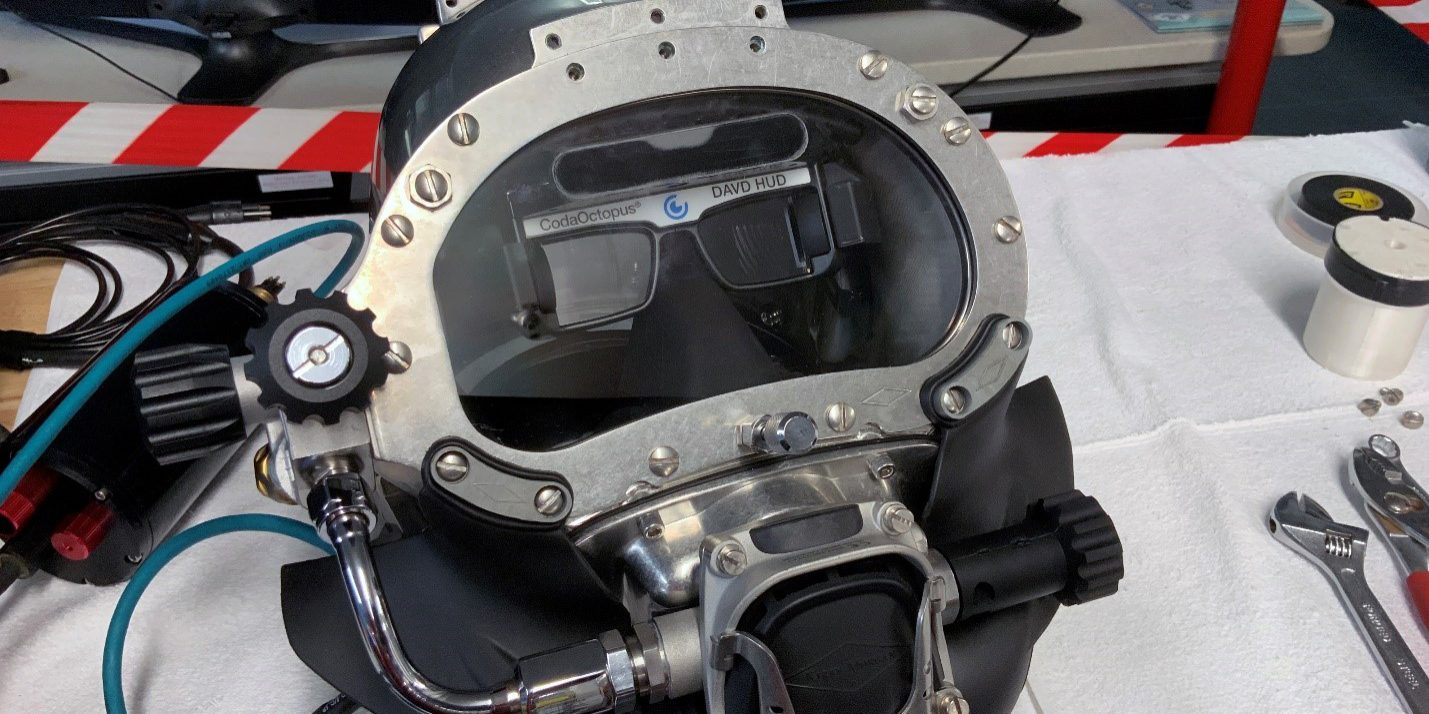HOUSTON, Texas – The Navy teamed up with NASA astronauts and engineers in Houston last week to test an evolving technology that allows divers to improve underwater task efficiency for potential use in NASA’s planned return to the moon.
Divers from the Naval Sea Systems Command’s Supervisor of Salvage and Diving (SUPSALV) joined the NASA team at the Sonny Carter Training Facility, NASA’s 6.2 million gallon Neutral Buoyancy Laboratory (NBL), and executed multiple dives Feb. 24-26 to test the Navy’ second-generation Diver Augmented Vision Display (DAVD) system.
“This was our last check before we introduce the Generation 2 DAVD system to the Fleet,” said Paul McMurtrie, SUPSALV’s Diving Systems Program Manager who oversees the DAVD program.
The first-generation DAVD system delivered by the SUPSALV office in collaboration with Naval Surface Warfare Center Panama City Division, Office of Naval Research, and Coda Octopus Group, Inc. in 2020 enabled divers to receive step-by-step instructions via its high-resolution heads-up display (HUD) when completing complicated tasks. Additionally, the DAVD used active sonar to provide divers with basic navigation data when operating in low-visibility environments. This next-generation DAVD brings in enhanced heading accuracy, the ability to receive sonar input from other sources outside of the helmet, and improvements to the navigation system that includes the ability to set waypoints and share bearing, range, and enhanced camera imagery directly with the HUD.
“The Sonny Carter facility is world-class and offers us the ability to test our system in a controlled environment where we can use NASA’s in-water mock-ups, whether it’s a simulated lunar surface or the International Space Station, to validate that we’re ready to deliver this capability to the Fleet,” said McMurtrie. “This is a mutually-beneficial and collaborative effort – the Navy gets to use this phenomenal facility, and NASA is able to train their astronauts using the DAVD system.”
“DAVD has been a game-changer for Navy Divers,” said SUPSALV’s Commander, Capt. Jay Young. “With the high-rez sonar display, our divers can navigate around obstacles in low and no visibility conditions, which means they can safely execute their mission and maximize productivity when we’re on the bottom.”


